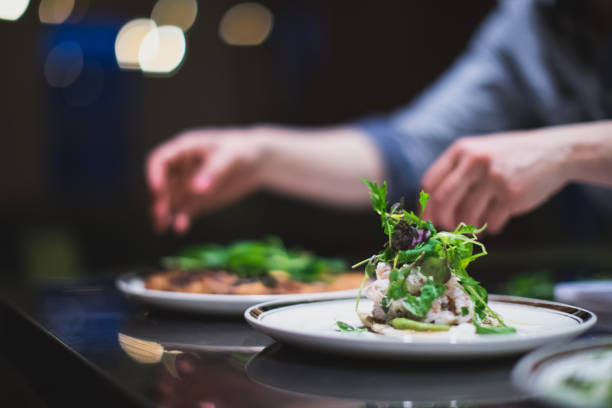Culinary Alchemy: Transforming Leftovers into Gourmet Delights
Breathe new life into yesterday's meals with the art of leftover transformation. This culinary adventure explores innovative techniques to elevate forgotten fridge dwellers into mouthwatering masterpieces. Discover the secrets of repurposing ingredients, unlocking hidden flavors, and creating stunning dishes that will revolutionize your approach to meal planning.

Layering Flavors for Depth
One of the most effective ways to transform leftovers is by layering new flavors. Start by assessing the base flavors of your leftover ingredients and think about complementary tastes that could enhance them. For instance, leftover grilled vegetables can be blended into a smoky dip with the addition of tahini, lemon juice, and spices. Or, turn plain rice into a vibrant fried rice by stir-frying it with soy sauce, ginger, and any leftover proteins or vegetables. The key is to introduce bold, fresh flavors that can stand up to and complement the existing taste profile of the leftovers. Experiment with herbs, spices, acids, and umami-rich ingredients to create depth and complexity in your transformed dishes.
Texture Transformation Techniques
Texture plays a crucial role in the enjoyment of food, and changing the texture of leftovers can make them feel entirely new. Consider transforming soft, overcooked vegetables into a silky soup by pureeing them with stock and cream. Alternatively, crisp up leftover mashed potatoes by forming them into patties and pan-frying for a delightful croquette. Shred leftover meats and crisp them in a pan for tacos or sandwich fillings. By altering textures, you not only create interest but also improve the overall eating experience of repurposed ingredients. The contrast between crispy and soft, or smooth and chunky, can elevate a simple leftover dish into something truly special.
Global Fusion Inspiration
Drawing inspiration from global cuisines can breathe new life into leftovers. Take a cue from Italian cuisine and transform leftover pasta into a frittata, or channel Mexican flavors by using leftover roast chicken in enchiladas. Asian-inspired stir-fries are perfect for using up a variety of leftover meats and vegetables. Indian curries can beautifully incorporate leftover roasted vegetables or meats. By thinking globally, you open up a world of possibilities for transforming familiar ingredients into exciting new dishes. This approach not only makes leftovers more appealing but also expands your culinary horizons and introduces new flavor combinations to your repertoire.
Presentation: The Final Touch
The way a dish is presented can dramatically alter perception and enjoyment. When transforming leftovers, pay special attention to plating and garnishing to elevate the final product. Use fresh herbs, microgreens, or edible flowers to add color and freshness. Experiment with different plating styles – stack components vertically for height, use negative space for elegance, or create colorful, artistic arrangements. Consider serving transformed leftovers in unexpected vessels like hollowed-out fruits or vegetables, or on rustic wooden boards for a trendy touch. Remember, we eat with our eyes first, so a beautifully presented dish of transformed leftovers can be just as appealing as any made-from-scratch meal.
Leftover Transformation Tips
• Always cool leftovers quickly and store properly to maintain food safety
• Think of leftovers as ingredients rather than finished dishes
• Keep a well-stocked pantry of spices, sauces, and versatile ingredients for easy transformations
• Invest in quality storage containers to keep leftovers fresh longer
• Don’t be afraid to mix cuisines or experiment with unusual flavor combinations
• Use leftover transformation as an opportunity to practice new cooking techniques
• Consider texture when reheating – some methods like broiling or frying can add crispness
• Incorporate fresh elements like herbs or raw vegetables to brighten transformed dishes
• Use leftover sauces and gravies as flavor bases for new dishes
• Remember that some dishes, like stews and curries, often taste better the next day
In conclusion, transforming leftovers is a culinary art that combines creativity, resourcefulness, and skill. By mastering the techniques of flavor layering, texture transformation, and global fusion, you can turn yesterday’s meals into today’s culinary masterpieces. Not only does this approach reduce food waste and save money, but it also challenges you to become a more innovative and adaptable cook. Embrace the art of leftover transformation and watch as your culinary creations reach new heights of deliciousness and sophistication.





